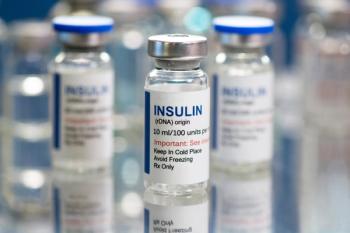
Welcome to the Pharmacy Times Bipolar Disorder Condition Center
A serious, chronic mental disease, bipolar disorder is treatable, and therapeutic options are increasing.
A serious, chronic mental disease, bipolar disorder is treatable, and therapeutic options are increasing.
When most people hear the term “bipolar disorder,” they envision the movie version: patients who have obvious and widely fluctuating moods. This perception—a pattern of alternations between depression and mania—is basically accurate, but incomplete. True bipolar affective disorder is considerably more complicated and includes bipolar I disorder (BD1), bipolar II disorder (BD2), and cyclothymic disorder. This Condition Center will explore bipolar disorder and its various iterations. This Condition Center commences at an ideal time. Therapeutic options are growing, and increasingly, patients with bipolar disorder are being managed by primary care providers.
Bipolar affective disorder’s community lifetime prevalence is estimated at approximately 4%. Patients usually present with deep, prolonged, and profound depression. Later, the depression alternates with manic periods—mood elevations, expansiveness, or periods of irritability. These symptoms are called gateway criteria. About one-third of patients will bipolar disease attempt suicide.
Patients generally have unique combinations of grandiosity; diminished need for sleep; pressured speech; racing thoughts or flight of ideas; distractibility; and frenzied home, work, or sexual activity. Often, patients have trouble with impulse control and the ill-advised and frequently illegal activities that bring them pleasure lead to painful consequences or arrest. People diagnosed with BD1 have manic episodes that last at least 1 week, while those diagnosed with BD2 have hypomanic episodes lasting at least 4 days.
Patients with bipolar disorder seek primary medical care for emerging depression and other conditions more often than others, and this over-representation in primary care creates a large burden of care, a topic discussed in a recent publication and summarized
Bipolar patients are much more likely to smoke, be involved in substance abuse, and be overweight or obese than matched controls. They also have elevated risks for cardiovascular disease, diabetes, and chronic obstructive pulmonary disease; when bipolar patients develop these diseases, the symptoms are often more severe than ordinarily expected.
Selecting appropriate medication is a balancing act. A new
- mania (lithium, valproate, carbamazepine, or select antipsychotic agents),
- bipolar depression (a distinct type of depression for which only 3 FDA-approved agents are available: quetiapine, olanzapine-fluoxetine, and lurasidone), and
- mood maintenance, for which off-label drug prescribing is common.
When structuring a medication plan for mood maintenance, providers need to consider patient adherence and potential toxicities and each patient’s propensity to manic or depressive predominance (or neither). Medications prescribed for bipolar disorder can be associated with significant risks, and they are usually needed chronically.
Newsletter
Stay informed on drug updates, treatment guidelines, and pharmacy practice trends—subscribe to Pharmacy Times for weekly clinical insights.












































































































































































































